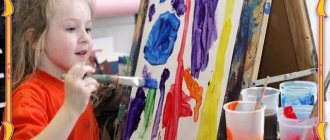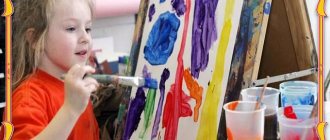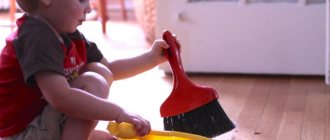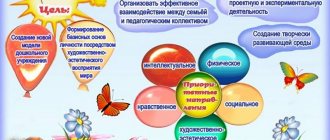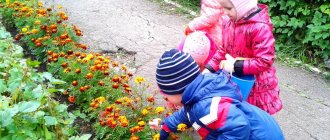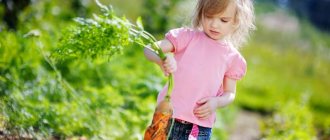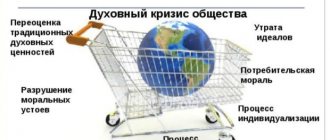Environmental education is an important component of the educational process in schools and kindergartens. Teachers organize their work in this direction both in the process of educational activities and in extracurricular activities. Forms, means and methods of environmental education are selected in accordance with the age of the children, the degree of their interest, and the natural environment.
Methods, forms and means of environmental education depend on the age of the children. The leading form of organizing work on environmental education is a lesson (class in a preschool educational institution). Experiences, experiments, observations, projects, the use of literature, conversations - those are the methods that the teacher uses in direct educational activities. In addition, in extracurricular activities. Extracurricular activities include excursions, holidays, themed leisure, and work with parents. All forms and methods can be used both in combination and separately.
Forms of environmental education
- Lesson . The most basic and most common form of work on environmental education of children is the lesson. He also classes (GCD) in kindergartens. In support of environmental education, such a subject as the surrounding world was created, which introduces children to living and inanimate nature, its laws, and the basics of environmental protection.
Lessons (activities) allow the teacher to develop children's knowledge about nature, taking into account their age characteristics. There are several types of classes:
- Initial informational. Such lessons (lessons) have an introductory function, that is, they introduce children to certain species (animals, birds, fish, etc.), their living conditions, natural phenomena, and basic concepts about the environment. The necessary material for such activities (lessons, conversations) are visual materials (demonstration aids, posters, films);
- Generalizing. Allows children to form general concepts about certain types and natural phenomena, the ability to identify their common features (senior preschool and primary school age);
- In-depth cognitive. Classes (lessons) that are based on previously acquired knowledge. Deepening what has already been learned, applying it in practice - such lessons are conducted in the form of a conversation, a quiz, or watching a video in class.
- Ecological holidays. Activities that are classified as extracurricular activities. They can be either timed to coincide with calendar holidays (Earth Day), or independent, invented by teachers. The purpose of such leisure is to evoke a positive emotional response in children, which in turn awakens interest in environmental problems. When drawing up an entertainment script, material that is already familiar to children is used.
- Excursions . Starting from the middle group of a preschool educational institution and ending with the middle classes of a comprehensive school, an excursion is one of the most effective forms of work on environmental education of children. And this is understandable. No matter how much we talk, no matter how many conversations we have, nature is an environment that can only be experienced by coming into direct contact with it, in a natural setting. The teacher conducts excursions in accordance with the requirements of the state educational program, previously indicating goals and objectives in the calendar plans.
- Labor It would be strange not to indicate this form of direct combination of human activity with environmental protection. In kindergartens, this is caring for living corners, flower beds, small vegetable gardens, organized by educators for the purpose of environmental education of children. At school, this means cleaning the area, watering, caring for plants, and working on the school site (especially common in rural schools).
- Participation in school city competitions and olympiads. Such competitions are often held both by the schools themselves to strengthen motivation among students, and by the city administration. Site reviews, quizzes, olympiads - all this awakens the spirit of competition, and, as a result, provides significant motivation for environmentally oriented detail among children of primary and senior school age.
- Working with parents. A full educational effect is achieved when school and family act in the same direction. Therefore, working with parents is one of the most important forms of environmental education. Consultations for parents, participation in school events, experiments conducted by children together with their parents (at home, in the country, in the village), participation of parents in shows and exhibitions are techniques that are necessary for fruitful work.
Environmental education classes for preschoolers
Methods and techniques of environmental education
Environmental education within the framework of the state educational program is an important part of the overall pedagogical process. As in any process, teachers try to use all the methods and techniques of education available to them.
Visual methods
As they say, it’s better to show once than to tell a hundred times, especially when it comes to children and their relationship with nature. In environmental education, visual methods are:
- Observation. It is always planned and purposeful. Observation has an object, a goal, and a time frame. The purpose of observation may be the causes of animal behavior, changes, development of living and inanimate objects, establishing and changing the properties, qualities, structure and appearance of the observed object or phenomenon. Observations can be carried out in small groups or the whole class at the same time, within and outside of educational activities. S.N. Nikolaeva, the author and developer of the system of environmental education in preschool educational institutions, pays great attention to observation as one of the most effective methods in this area of education.
- Illustrative and visual material. Books, illustrations, flashcards, films, videos, photographs and paintings - all this is illustrative material with which the teacher has the opportunity to introduce children to those natural phenomena (objects) that are not available for observation in natural conditions.
Practical methods
Practical methods are necessary to fully integrate children into environmental culture.
- Modeling. The modeling method is well suited for children in primary and secondary school. It represents the replacement of real objects (phenomena) with the help of diagrams, signs, figures or images. Modeling helps children create a general understanding of the object being studied.
- Experiences and experiments. Experience in environmental education is observation of the object being studied in conditions specially created for this. The experience must have a purpose and purpose. The course of the experiment must be thought out, as well as technologies and means. The experience itself is logically completed verbally or in writing.
- Ecological games. Didactic, mobile, board or verbal - a game is an introduction, cognition and consolidation of material. Play, as a method of environmental education, is widely used by kindergarten teachers, since in preschool age play is the leading activity .
Book by Nikolaeva S.N. environmental education of preschool children - methodology
Verbal methods
By verbal methods we mean conversations, stories, analysis of what we read or saw. Verbal methods are almost always supported by visual ones. A conversation always precedes any game, experiment, or observation. Conversation accompanies any other method.
One of the verbal methods is reading fiction. This can be either special environmental literature recommended by the curriculum, or works of classical writers. Many authors paid attention to the problems of nature, wildlife, and environmental protection.
Methods of environmental education for preschool children
Bibliographic description:
Ivanova, V.V. Methods of environmental education for preschool children / V.V. Ivanova. — Text: direct // Education and upbringing. - 2022. - No. 4 (19). — P. 17-19. — URL: https://moluch.ru/th/4/archive/101/3536/ (access date: 01/18/2022).
Everyone knows about the beneficial effects of nature on humans. The organization of useful activities for children, according to a number of authors (V.G. Gretsov, E.N. Nikolaev, P.G. Samorukova, etc.), is the basis for a conscious, careful attitude towards nature. This is how we can determine the boundaries of the most important problem of environmental education of children in our time. The problem of environmental education and upbringing is one of the most pressing today. In the system of continuous environmental education, the initial link is preschool childhood. During this period, the formation of the most important qualities of the human personality takes place, and the foundations of an ecological culture are laid. Already from preschool age, it is necessary to give children the idea that a person needs an environmentally friendly environment.
Classical pedagogy distinguishes two concepts - “teaching methods” and “upbringing methods”; their theoretical consideration will help to define and characterize the methods of environmental education of preschoolers.
Leading domestic teachers (I. Ya. Lerner, N. M. Skatkin, Yu. K. Babansky, etc.) consider teaching methods as a system of sequential interconnected actions of the teacher and student. At the same time, any teaching methods are characterized by three characteristics: the purpose of training, the method of mastering the content, and the interaction of participants in the process.
Researchers, both ours and foreign ones, note the general development of the theory of teaching methods, which results in numerous and different bases for their classification [3].
Yu. K. Babansky in his classification identifies three groups of teaching methods: methods of organizing and implementing educational and cognitive activities; its stimulation and motivation; her control and self-control. The term “educational-cognitive activity” precisely implies the joint activity of the teacher and students, in which the teacher performs educational actions, and the students perform cognitive ones.
According to S.N. Nikolaeva, preschool pedagogy, to an even lesser extent than school pedagogy, explores methods of raising and teaching children. S. N. Nikolaeva gives the following definition of the pedagogical method - this is a method of influencing an adult on children through joint activities.
There is no unified classification of methods in environmental education.
In the environmental education of children, the classification of methods (visual, verbal, practical) is widely used. Objects and natural phenomena that a child must learn require the use of a variety of methods.
When introducing children to nature, it is necessary to use all methods in a complex, and at the same time correctly combine them with each other.
The method of environmental education is a science that studies the features and patterns of organizing pedagogical work with preschool children. The main goal of environmental education of children is to teach the child to develop knowledge of living nature [1].
The main method in environmental education is the visual method.
Visual methods contribute to the formation in children of clear ideas about the world around them, play and work activities, and the development of perception. Visual methods are observational methods that stimulate children's interest.
Observation is a purposeful, systematic perception of objects and phenomena of the surrounding world. By organizing observations in nature, the teacher solves the following problems:
- Forms children's knowledge about nature;
- Develops interest;
- Develops aesthetic feelings. [4]
The teacher uses various types of observation.
Recognizing observation.
It is used to get acquainted with a new natural phenomenon. In the process of discriminating observation, children learn to distinguish color, shape, size, and spatial arrangement of parts.
Long-term observation.
For example, you can watch the growth of onions in a jar of water. During these observations, intelligence, observation, comparisons develop, and they learn to analyze.
Observation begins with the selection of an object. To arouse children's interest, the teacher uses poetry, small forms of folklore, and excerpts from works of art.
Visual methods contribute to the formation in children of clear ideas about the world around them, play and work activities, and the development of perception.
Verbal methods. When using verbal methods, the teacher must take into account the ability to understand speech, long-term voluntary attention and concentration on content [2].
For example: while walking, the children saw ants working. "What are they doing?" - the children ask. The teacher offers to look first, and then, during the observation process, talks about ants.
- Story - used to attract children's attention.
The next group of methods are practical methods. Practical methods include: play.
The basis for the classification of games was laid by J. F. Lesgaft. He discovered a system of outdoor games and developed their methodology.
Play is a method by which children get acquainted with the world around them. When getting acquainted with nature, the following types of didactic games are used.
Subject games are games using different cones, seeds, leaves, etc.
Tabletop - printed - develop logical thinking (“Berries and Fruits”, “Mushrooms”, “Loto”).
Word games - oral questions about nature to children (“When does this happen?”, “Who flies?”, etc.)
Creative games: construction games, which help children to understand the quality and properties of natural objects (sand, cones, snow, clay).
Outdoor games: children imitate the habits of animals. (“The Mother Hen and the Chicks”, “Wolves and Sheep”, “Sunshine and Rain”)
Work. It is used in everyday care of plants in a corner of nature.
While developing labor skills, at the same time it is necessary to consolidate knowledge about nature. For example: Before sowing, consider the seeds (shape, size, color).
One of the important conditions for the implementation of an environmental education system in a preschool institution is the correct organization of the developmental subject environment.
Environmental education of preschool children is an important component. This takes into account the age of the children and the essence of the phenomenon or natural object being studied. And the most important thing is to evoke an emotional response in children and a desire to continue and get acquainted with environmental activities.
I am deeply convinced that it is necessary to instill in children a love of nature from a very early age.
Literature:
- Nikolaeva S. N., Komarova I. A. Story games in the environmental education of preschool children. Game-based learning situations with toys of various types and literary characters6 A manual for teachers of preschool institutions. - M.: GNOM and D. 2003. 100 p.
- Nikolaeva S.N. Methods of environmental education of preschool children / Nikolaeva S.N. - M., 2001.
- Ryzhova N. A. Environmental education in kindergarten / Ryzhova N. A. - M. 2000.
- Serebryakova T. A. Environmental education in preschool age / Serebryakova T. A. - M., 2006.
- Surkina S. A. Environmental education of preschool children: textbook Surkina S. A. - Saratov: Publishing House "Saratov Source", 2011. - 103 p.
Key terms
(generated automatically)
: child, the world around us, environmental education of children, preschool age, play, nature, environmental education, cognitive activity, labor activity, environmental education.
